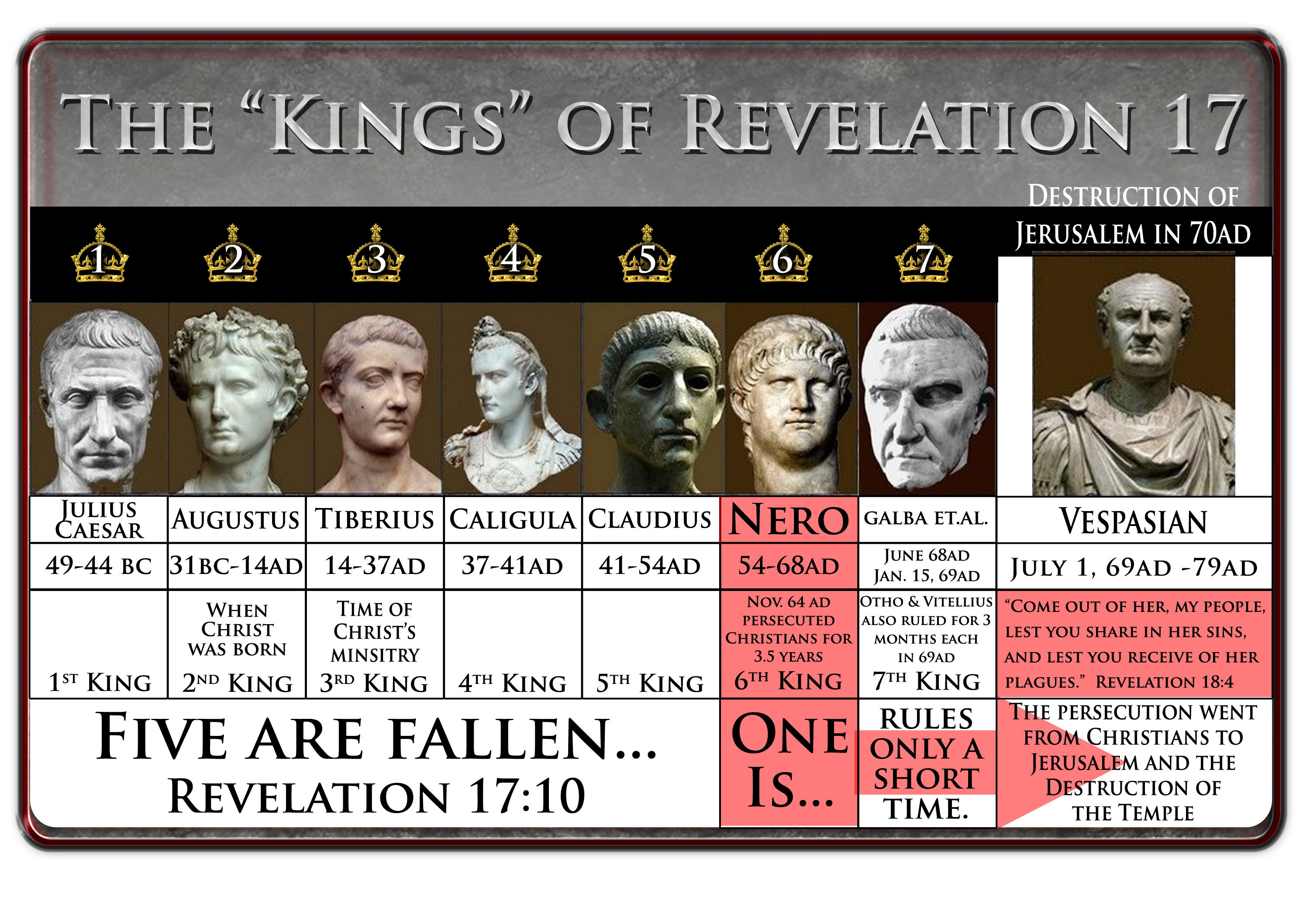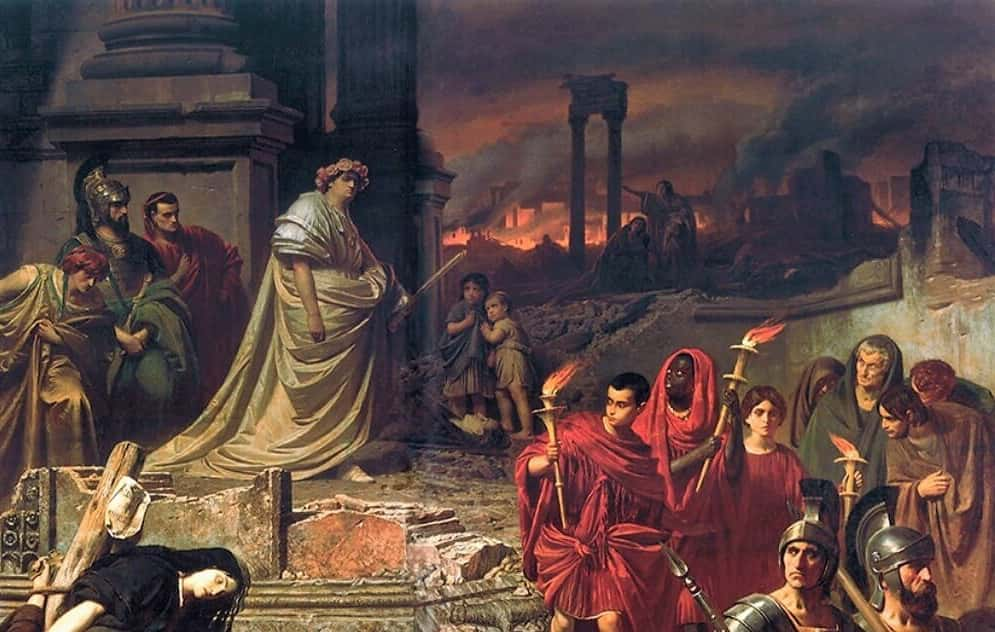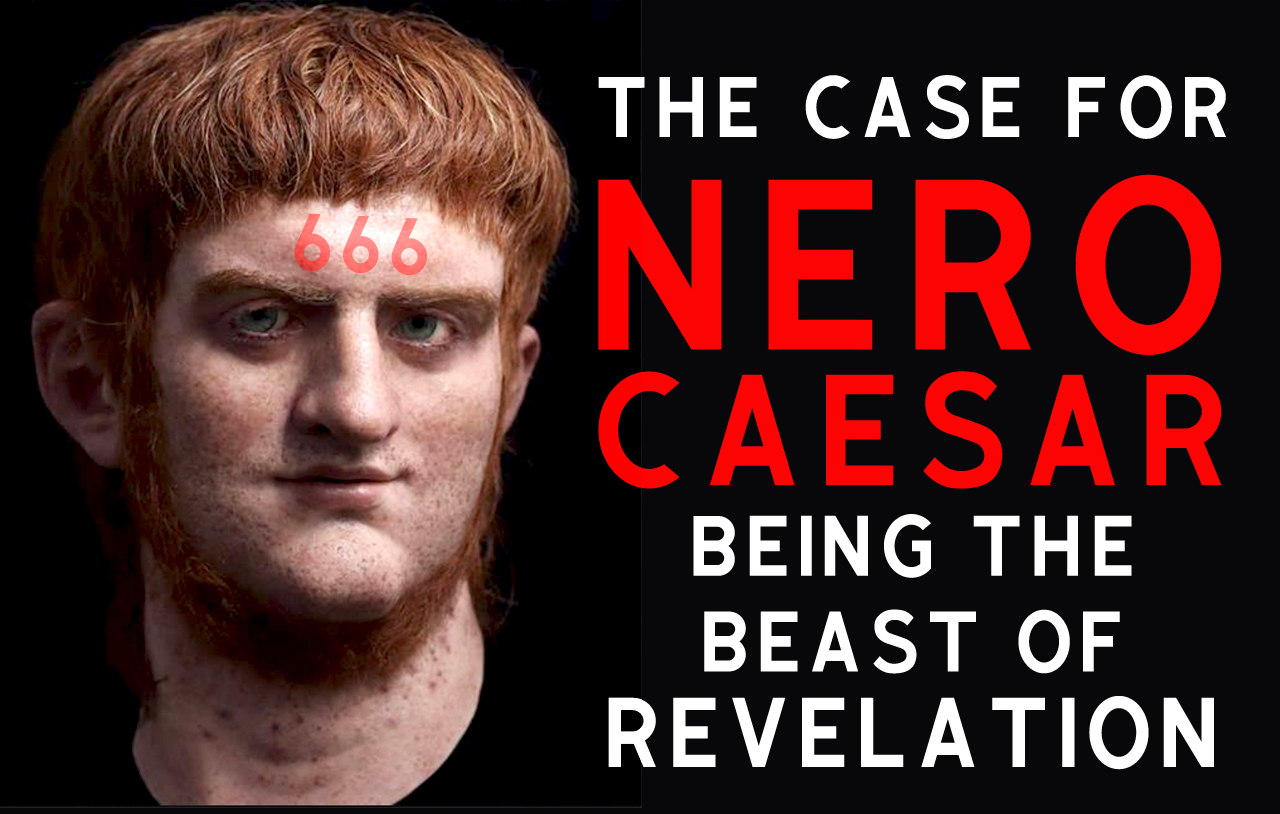
|
This is a non-WLC article. When using resources from outside authors, we only publish the content that is 100% in harmony with the Bible and WLC current biblical beliefs. So such articles can be treated as if coming directly from WLC. We have been greatly blessed by the ministry of many servants of Yahuwah. But we do not advise our members to explore other works by these authors. Such works, we have excluded from publications because they contain errors. Sadly, we have yet to find a ministry that is error-free. If you are shocked by some non-WLC published content [articles/episodes], keep in mind Proverbs 4:18. Our understanding of His truth is evolving, as more light is shed on our pathway. We cherish truth more than life, and seek it wherever it may be found. |
 The beast mentioned in the Book of Revelation has garnered much attention from Christians. Speculation abounds regarding the identity of this evil creature who makes war against Yahuwah and His saints. Most Christians just assume that whoever The Beast is, he’s some future person or entity that will reign on Earth for 7 years before the return of Christ, and he will put the number 666 on their foreheads and hands and will prevent anyone who doesn’t have that 666 from buying or selling. It is also assumed that “The Anti-Christ” and The Beast are two titles for the same entity. Throughout church history, several candidates have been proposed for who might be The Beast/The Anti-Christ from Adolf Hitler, The Pope, Ronald Reagan, and even Barack Obama!
The beast mentioned in the Book of Revelation has garnered much attention from Christians. Speculation abounds regarding the identity of this evil creature who makes war against Yahuwah and His saints. Most Christians just assume that whoever The Beast is, he’s some future person or entity that will reign on Earth for 7 years before the return of Christ, and he will put the number 666 on their foreheads and hands and will prevent anyone who doesn’t have that 666 from buying or selling. It is also assumed that “The Anti-Christ” and The Beast are two titles for the same entity. Throughout church history, several candidates have been proposed for who might be The Beast/The Anti-Christ from Adolf Hitler, The Pope, Ronald Reagan, and even Barack Obama!But what if the presupposition behind all of this speculation is false? What if The Beast isn’t a future yet-to-come figure at all? What if he was a first-century beast who already came and went? In this paper, I propose that The Beast described in Revelation was the first-century emperor Nero Caesar. I will explain three interpretive keys that lead me to think that Revelation is describing a first-century figure in the first place. Then I will give the evidence that points to Nero Ceasar specifically as fitting the description of The Beast.
The first piece of evidence pointing to a first-century figure, The Beast of Revelation, is found in the very first verse of the book of Revelation. The book opens with these words; “The revelation of Yahushua Christ, which Yahuwah gave him to show to his servants the things that must soon take place. He made it known by sending his angel to his servant John,” (Revelation 1:1, emphasis mine). John said that Yahushua revealed to him things that must SOON take place.
As Keith Mathison of Ligonier Ministries wrote, “…the book itself indicates when at least most of its prophecies are to be fulfilled. In both the first and last chapters, John tells his first-century readers that the things revealed in the book “must soon take place” (1:1; 22:6) and that “the time is near” (1:3; 22:10). These statements are generalizations, so they do not require that every event prophesied in the book must be fulfilled in the first century, but the generalizations do provide us with a “general” idea of how we should understand the book. xviii The bulk of John’s prophecy concerns something that was impending in his own day.”5
 It is beyond implausible to think that John imagined that the vast majority of his book prophesied events that wouldn’t occur for thousands of years, yet he tells his readers that they are to take place “soon,” “quickly,” and “shortly.” In what sense could anyone imagine that 2000+ years is, in any sense, “soon”? A plain reading of the text suggests that John expected the things he prophesied to take place within a short time. In verse 3, John goes on to repeat the nearness of the events by saying, “Blessed is the one who reads aloud the words of this prophecy, and blessed are those who hear, and who keep what is written in it, for the time is near.”
It is beyond implausible to think that John imagined that the vast majority of his book prophesied events that wouldn’t occur for thousands of years, yet he tells his readers that they are to take place “soon,” “quickly,” and “shortly.” In what sense could anyone imagine that 2000+ years is, in any sense, “soon”? A plain reading of the text suggests that John expected the things he prophesied to take place within a short time. In verse 3, John goes on to repeat the nearness of the events by saying, “Blessed is the one who reads aloud the words of this prophecy, and blessed are those who hear, and who keep what is written in it, for the time is near.”
This is even more probable when you look at a statement the apostle made in one of his epistles; “Dear children, this is the last hour; and as you have heard that the antichrist is coming, even now many antichrists have come. This is how we know it is the last hour.” (1 John 2:18,) John said he and his readers lived in “the last hour.” His readers had heard that “the antichrist is coming,” and he says that even now, many anti-Christ have come, and that’s how they know that it is the last hour. The language “the last hour” indicates that John thought the end was near, not thousands of years into the future.6 Additionally, if one believes “The Anti-Christ” and The Beast Of Revelation are the same, then this language of nearness connected to John’s statement of the coming of The Anti-Christ would lend further credence to a first-century figure of Revelation’s Beast.
When John said, “We are in the last hour,” “Yahushua revealed things to me that must soon take place,” and “the time is near,” his prophecies would go unfulfilled for thousands of years. I find this highly implausible.
Additionally, we have the fact that John tells his readers to calculate the beast's number. He says, “Calculate the number of the beast, for it is the number of a man. That number is 666.” (Revelation 13:18). As Hank Hanegraaff put it in his book The Apocalypse Code; “Obviously, no amount of wisdom and insight would have enabled a first-century audience to calculate the number of a twenty-first-century beast. It would have been cruel and dangerously misleading for John to suggest to first-century Christians that they could identify the beast if it was a twenty-first-century individual or institution.”1 Moreover, what does John even mean by “calculate the number of the beast”? What does calculating the number even look like?
“Calculate the number of the beast, for it is the number of a man. That number is 666.” (Revelation 13:18).
|
In Hanegraaff’s The Apocalypse Code, he said, “Furthermore, unlike today, transforming names into numbers (gematria) was common in antiquity. For example, in the Lives of the Twelve Caesars, Roman historian Suetonius identifies Nero by a numerical designation equal to a nefarious deed. This numerical equality (isomorphism) is encapsulated in the phrase: “Count the numerical values of the letters in Nero’s name, and in ‘murdered his mother,’ and you will find their sum is the same.” In Greek, the numerical value of the letters in Nero’s name (Greek: Nevrwn, English transliteration: Neron) totaled 1,005, as did the numbers in the phrase murdered his mother. This ancient numerical cryptogram reflected the widespread knowledge that Nero had killed his mother.“2
It is far more plausible to suggest that the apostle admonished his readers to apply Gematria to the Beast’s number to come up with his name. Since Gematria is rarely practiced today, it would seem unlikely that John had a 21st or 22nd-century audience. Of course, the citation above objects to Nero being the Beast since, as Hanegraaff said, his name comes out to 1,005. I’ll come back to this later.
In Daniel 12, after receiving prophecies, an angel told him, “But you, Daniel, roll up and seal the words of the scroll until the time of the end. Many will go here and there to increase knowledge.” (verse 4). By contrast, in Revelation 22:10, the angel told John, “Then he told me, ‘Do not seal up the words of prophecy in this book, because the time is near.'”
So, we have a contrast here. In the former, the angel said to seal up the scroll's words. In the latter, the angel said not to seal up the scroll's words. Why? In his book End Times Bible Prophesy: It’s Not What They Told You, Brian Godawa said “….when a prophecy was not to occur for thousands of years, the angel said to ‘seal up the book’ (Dan 12:4); but when a prophecy was about to occur near the lifetime of the prophet, he said, ‘Do not seal up the book’ (Rev 22:10). If John’s Revelation was to occur thousands of years later in our modern period, the angel would have said to seal up the book, but he did not.”9
The Evidence Pointing Specifically To Nero
Now that we’ve determined that The Beast Of Revelation was something or someone in the first century, I will show how the historical evidence points to Nero Caesar specifically as this first-century beast.
*The Seven Heads of the Beast
Regardless of their eschatological position, most of the theologians I have read regarding the Revelation Beast agree that The Beast represents more than one thing. Sometimes, it means a dude; other times, it represents a kingdom.
In some places, the one Beast has seven heads, which are collectively considered seven kings. In Revelation 13:1 John notes that he “saw a beast coming up out of the sea, having ten horns and seven heads”. Revelation 17:10 notes explicitly that the seven heads represent “seven kings.” Thus, the Beast is generically portrayed as a kingdom.
But in the same contexts, the Beast is spoken of as an individual, as one of the heads, as a particular part of the monster. John urges his readers to “calculate the number of the beast, for the number is that of a man” (Revelation. 13:18). In Revelation 17:11, the angel tells John, “the beast which was and is not, is himself also an eighth, and is one of the seven.” This feature is recognized by most commentators of various schools of interpretation, including even dispensationalists.
Revelation 17 gives the vision of the seven–headed Beast. Verses 9 and 10 tell us this about this beast: “Here is the mind which hath wisdom. The seven heads are seven mountains, on which the woman sitteth. And there are seven kings: five are fallen, and one is, and the other is not yet come; and when he cometh, he must continue a short space.” (KJV)
What’s important to note about these 2 verses is the reference to the 7 mountains. Most New Testament scholars agree that the reference to the seven mountains refers to Rome. Why? Well, because in antiquity, Rome was famous for being “The city on seven hills”.10 Sort of similar to how we refer today to New York as “the city that never sleeps.” Dr. Kenneth L Gentry wrote, “The original recipients of Revelation lived under the rule of Rome, which was universally distinguished by its seven hills. How could the recipients, living in the seven historical churches of Asia Minor and under Roman imperial rule, understand John’s vision as anything other than this geographical feature?”3
*The Sixth King
“This calls for a mind with wisdom: the seven heads are seven mountains on which the woman is seated; they are also seven kings, five of whom have fallen, one is, the other has not yet come, and when he does come he must remain only a little while.” – Revelation 17:9–10
Pilate asks, “Don’t you want me to release your king to you?” What does the crowd say in response? “We have no king but Caesar” (John 19:15). They considered the Caesar reigning at the time to be their king.
|
Here, John says the seven heads not only represent the seven mountains on which the woman sits (i.e., Rome), but the seven heads of The Beast also represent seven kings. John says that five have fallen (i.e., died), one is still around, and there’s still another one coming. And John says that this king, who hasn’t arrived yet, isn’t going to reign for a very long time. Now, who are these kings?
Immediately, some futurists object to these being Roman Emperors because an emperor and a king aren’t the same thing, just as a president and a prime minister aren’t the same. The problem with this objection is that it fails to understand the ancient Jewish mindset. Yes, in the most technical sense, an emperor is not a king. Nevertheless, that’s what the Jewish people called their emperors. Remember in John’s gospel where Pilate has Yahushua before the crowd and has them choose whether to have Yahushua released to them or Barabbas (John 19)? Pilate asks, "Don’t you want me to release your king to you?” What does the crowd say in response? “We have no king but Caesar” (John 19:15). They considered the Caesar reigning at the time to be their king. In fact, “king” was just a generic term they used for anyone who ruled over them. Ergo, it isn’t farfetched to suppose that John would use this term for Roman Emperors.
Suetonius has written that Nero was the sixth king of Rome. Julius, Augustus, Tiberius, Gaius, and Claudius were the previous five. And in yet another precise fulfillment of John’s words in his day, the Caesar after Nero was Galba, who reigned a mere seven months. In other words, “only a little while,” just as John said he would.12
Kenneth Gentry wrote, “It is surely no accident that Nero was the sixth emperor of Rome. Flavius Josephus, the Jewish contemporary of John, clearly points out that Julius Caesar was the first emperor of Rome and that he was followed in succession by Augustus, Tiberius, [Caligula], Claudius, and, sixthly, Nero (Antiquities, books 18 and 19). The matter is confirmed just a little later in the writings of Roman historians: Suetonius, Lives of the Twelve Caesars and Dio Cassius, Roman History.”4

*666: The Number Of His Name
Remember, earlier in this paper, I said that gematria was a common practice in antiquity. People assigned a numerical value to letters of the alphabet. One of the objections to Nero being the emperor is that when you apply gematria to his name, it comes out to 1,005, not 666. So if Nero’s name is calculated to be 1005, how could he be the beast Revelation talks about?
The answer is that while John wrote in Greek, he thought in Hebrew. Yes, Nero’s name comes out to 1005 in Greek! But not if you calculate the Hebrew transliteration of his name, Nrwn Qsr. If you apply gematria to the Hebrew transliteration of his name, it comes out to exactly 666! Coincidence? You tell me.
But what about the mark? Indeed, Nero didn’t have a legion of Roman soldiers going around with Sharpies putting 666s on people’s hands and foreheads, right? No ancient historian records Nero doing this. Ah, but you’re taking the mark of the beast too literally. I believe the mark of the beast is symbolic. I say this not without precedence. The Anti-Christ has a mark, but what is often overlooked is that Yahushua Christ has a mark of his own that he places on his people. Revelation 14:1 says, “Then I looked, and here was the Lamb standing on Mount Zion, and with him were one hundred and forty-four thousand, who had his name and his Father’s name written on their foreheads.” (emphasis mine). No one I know of thinks that when we all go to Heaven, we will have Yahushua standing at the pearly gates, writing his name and the name of The Father in gematria on our hands and foreheads. Yahuwah will not give everyone a tattoo or a computer chip upon entering His kingdom. So then, why think that the mark of the beast is any more literal than the mark of the Lamb?
As Brian Godawa noted in his book End Times Bible Prophesy: It’s Not What They Told You, sealing is a spiritual metaphor of ownership. For example, Paul talks about those sealed by the Holy Spirit in Ephesians 1:13. Revelation compares and contrasts those owned by the Beast with those held by Yahuwah.5
 I believe John is referring to the imperial cult of Rome, whereby the citizens of Rome were required to worship Caesar and offer sacrifices to him. As N.T Wright explains, “The evidence now available, including that from epigraphy and archaeology, appears to show that the cult of Caesar, so far from being one new religion among many in the Roman world, had already by the time of Paul’s missionary activity become not only the dominant cult in large part of the empire, certainly in the parts where Paul was active but was the means (as opposed to overt large-scale military presence) whereby the Romans managed to control and govern such huge areas as came under their sway. The emperor’s far-off presence was made ubiquitous by the standard means of statues and coins (the latter being the principal mass medium of the ancient world), reflecting his image throughout his domains; he was the great benefactor through whom the great blessings of justice and peace, and a host of lesser ones besides, were showered outwards upon the grateful populace — who in turn worshipped him, honored him, and paid him taxes.” 15
I believe John is referring to the imperial cult of Rome, whereby the citizens of Rome were required to worship Caesar and offer sacrifices to him. As N.T Wright explains, “The evidence now available, including that from epigraphy and archaeology, appears to show that the cult of Caesar, so far from being one new religion among many in the Roman world, had already by the time of Paul’s missionary activity become not only the dominant cult in large part of the empire, certainly in the parts where Paul was active but was the means (as opposed to overt large-scale military presence) whereby the Romans managed to control and govern such huge areas as came under their sway. The emperor’s far-off presence was made ubiquitous by the standard means of statues and coins (the latter being the principal mass medium of the ancient world), reflecting his image throughout his domains; he was the great benefactor through whom the great blessings of justice and peace, and a host of lesser ones besides, were showered outwards upon the grateful populace — who in turn worshipped him, honored him, and paid him taxes.” 15
There was a bit of leniency for the Jewish people. Nero didn’t require them to offer sacrifices to him so long as they offered sacrifices on his behalf.7 A compromise accommodated the scripture forbidding Jews from participating in such activities (Exodus 20:2-3). Christians, however, would not even accept the compromise. As a result, they were socially and economically deprived. In other words, they could not buy or sell anything.17
Nero had an imperial cult in which he required people to worship him. He instructed people to sacrifice to him or at least on his behalf. Christians wouldn’t do this, so they were not allowed to buy or sell anything, depriving them socially and economically. The mark of the beast isn’t a tattoo or computer chip; it’s making allegiance with the beast. Those who worshipped the beast belong to the beast (i.e., had his mark, Revelation 16:2). Those who worshipped The One True Yahuwah had the mark of the lamb (Revelation 14:1).
*War With The Saints
The Bible says that The Beast Of Revelation was given the power to wage war against Yahuwah’s holy people and to conquer them (Revelation 13:7).
It’s no secret that in the year 64, Nero unleashed a horrific persecution against The Church. Tacitus writes, “Therefore, to stop the rumor [that he had set Rome on fire], he [Emperor Nero] falsely charged with the guilt and punished with the most fearful tortures, the persons commonly called Christians, who were [generally] hated for their enormities. Christus, the founder of that name, was put to death as a criminal by Pontius Pilate, procurator of Judea, in the reign of Tiberius. Still, the pernicious superstition – repressed for a time, broke out yet again, not only through Judea – where the mischief originated, but through the city of Rome also, whither all things horrible and disgraceful flow from all quarters, as to a common receptacle, and where they are encouraged. Accordingly, first, those were arrested who confessed they were Christians; next, on their information, a vast multitude were convicted, not so much on the charge of burning the city as of “hating the human race.” (Annals, book 15)

Tacitus went on to say, “In their very deaths they were made the subjects of sport: for they were covered with the hides of wild beasts, and worried to death by dogs, or nailed to crosses, or set fire to, and when the day waned, burned to serve for the evening lights. Nero offered his garden players for the spectacle and exhibited a Circensian game, indiscriminately mingling with the common people in the dress of a charioteer or else standing in his chariot. For this reason, a feeling of compassion arose towards the sufferers, though guilty and deserving of exemplary capital punishment, because they seemed not to be cut off for the public good, but were victims of the ferocity of one man.”
Church historian J. L. von Mosheim wrote of Nero’s persecution: “Foremost in the rank of those emperors, on whom the church looks back with horror as her persecutors, stands Nero, a prince whose conduct towards the Christians admits of no palliation, but was to the last degree evil and inhuman. The dreadful persecution which took place by order of this tyrant commenced at Rome about the middle of November, in the year of our Lord 64…. This dreadful persecution ceased with the death of Nero. The empire, it is well known, was not delivered from the tyranny of this monster until the year 68, when he put an end to his own life.”8
*Non-Christian Historians Noted The Extreme Depravity Of Nero
The Roman historian Tacitus (A.D. 56–117) spoke of Nero’s “cruel nature” that “put to death so many innocent men.” Pliny the Elder (A.D. 23–79) described Nero as “the destroyer of the human race” and “the poison of the world.” The Roman satirist Juvenal (A.D. 60–140) speaks of “Nero’s cruel and bloody tyranny.“ Elsewhere, he calls Nero a “cruel tyrant.”
Apollonius of Tyana wrote, “In my travels, which have been wider than ever man yet accomplished, I have seen many, many wild beasts of Arabia and India; but this beast, that is commonly called a Tyrant, I know not how many heads it has, nor if it is crooked of claw and armed with horrible fangs…. And of wild beasts, you cannot say that they were ever known to eat their own mother, but Nero has gorged himself on this diet.”
*The Beast Arising From The Dead
Who or what is this woman? I submit to you that the harlot who rode The Beast is apostate Israel. Think about it. This woman is “drunk with the blood of Yahuwah’s holy people, the blood of those who bore testimony to Yahushua.”
|
So far, Nero is a pretty good candidate for being the Beast identified in the Book of Revelation. When I got into studying eschatology though, one thing always bothered me about the idea of Nero being The Beast Of Revelation. Doesn’t The Bible say that The Beast will receive a fatal wound and then return from the dead (Revelation 13:3)? There isn’t any account of Nero dying and coming back to life. What do we make of this description of The Beast receiving a fatal wound and then recovering from it?
Nero was the head of the Beast (Roman Empire) who had a fatal wound. People of that time thought that the Roman Empire was doomed since Nero had perished. The Beast (The Roman Empire) was revived after civil wars after Nero’s death. The Roman Empire lived on after Nero’s death.9
Bonus: Who Is The Woman Who Rode The Beast in Revelation 17?
Who or what is this woman? I submit to you that the harlot who rode The Beast is apostate Israel. Think about it. This woman is “drunk with the blood of Yahuwah’s holy people, the blood of those who bore testimony to Yahushua.” The book of Acts records the persecution of the early Christians by Jews who did not believe in Yahushua (e.g., Acts 6-8). Moreover, the reference to the woman being “dressed in purple and scarlet, and was glittering with gold, precious stones, and pearls” refers to the breastplate that those in the priesthood wore. Additionally, the nation of Israel was historically known to “prostitute” herself to pagan gods (see, e.g., Jeremiah 2:20–24; 3:2–3; Ezekiel 23:9–20). The book of Hosea is all about how Israel kept committing spiritual adultery against Yahweh. Moreover, in The Apocalypse Code, Hank Hanegraaf notes many shared imagery in Ezekiel 16 and Revelation 17. In both of these biblical books, “the prostitute commits adultery with the kings of the earth; is dressed in splendor; glitters with gold and precious jewels; and is intoxicated with the blood of the righteous.”
The Beast Of Revelation was Nero Caesar.

NOTES:
1: See Hank Hanegraaff, “The Apocalypse Code” (Nashville, W Publishing Group, 2007), page
2: ibid.
3: Kenneth L Gentry, from the online article “The Beast Of Revelation Identified”, published September 2008, https://www.truthaccordingtoscripture.com/documents/eschatology/beast.php#.W6JN2s5KiUk
4: Kenneth L Gentry, from the online article “The Beast Of Revelation Identified”, published September 2008, https://www.truthaccordingtoscripture.com/documents/eschatology/beast.php#.W6JN2s5KiUk
5: Godawa, Brian. End Times Bible Prophecy: It’s Not What They Told You (p. 116). Embedded Pictures Publishing. Kindle Edition.
6: N.T. Wright, “Paul’s Gospel and Caesar’s Empire,” in Ed. Richard A. Horsley, Paul and Politics: Ekklesia, Israel, Imperium (Penn., Trinity Press, 2000), 161.
7: Flavius Josephus, The Wars of the Jews, 2.409-410 (2.17.2).
8: (L. von Mosheim, Historical Commentaries, I:138,139).
9: https://preterismmatters.webs.com/thebookofrevelation.htm
This is a non-WLC article by Evan Minton.
We have taken out from the original article all pagan names and titles of the Father and Son, and have replaced them with the original given names. Furthermore, we have restored in the Scriptures quoted the names of the Father and Son, as they were originally written by the inspired authors of the Bible. -WLC Team